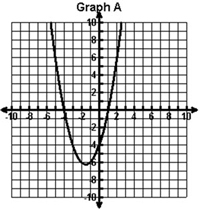
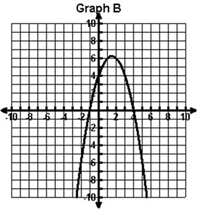
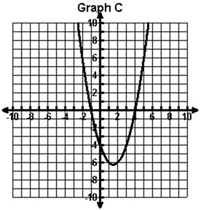
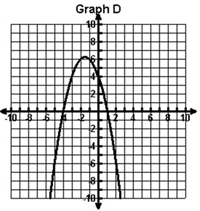
A quadratic function has a vertex of (1, -16) and a y-intercept of -15. Which of the following tables represents this function?
A.
|
B.
| ||||||||||||||||||||||||||||||||||||
C.
|
D.
|
||||||||||||||||||||||||||||||||||||
Which of the following graphs shows a quadratic function with roots of – 4 and 1 and a maximum value?
A.
 |
B. |
C. |
D. |
Which of the following graphs contains the points shown in the table below?
| x | y |
|---|---|
| -4 | 9 |
| -3 | 0 |
| -2 | -5 |
| -1 | -6 |
A.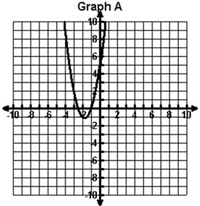 |
B.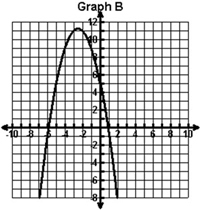 |
C.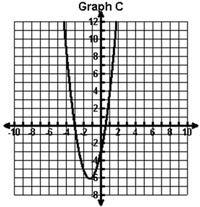 |
D.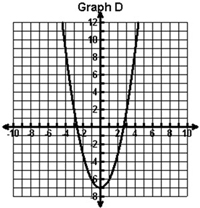 |
Which of the following functions represents the values in the table below?
| x | -2 | -1 | 0 | 1 | 2 |
|---|---|---|---|---|---|
| f(x) | 3 | 1 | 1 | 3 | 7 |
The graph of a quadratic function is shown below.
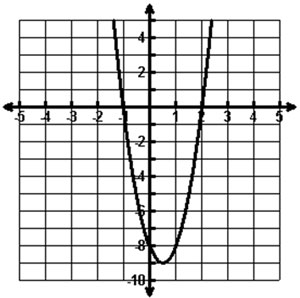
Which of the following is a true statement about the graph?
The graph of a quadratic function is shown below.
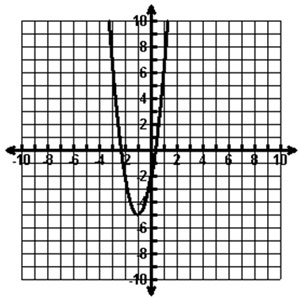
Which of the following tables represents values of the function?
A.
|
B.
|
||||||||||||||||||||||||
C.
|
D.
|
||||||||||||||||||||||||
Which of the following graphs represents the function shown below?
f(x) = -(x + 1)2 − 3
A.
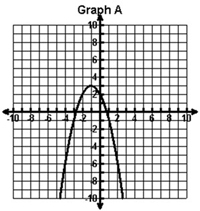 |
B. |
C.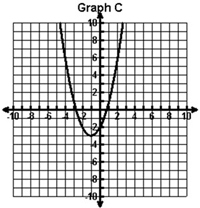 |
D. |
Look at the quadratic function below.
f(x) = 2(x + 3)2 − 7
Which of the following is a true statement about the function?
Jake is creating a rectangular flower bed in his front yard. He buys a roll of edging to place around the bed. The roll contains 100 feet of edging. The equation y = x(50 − x) can be used to calculate the area of the bed, y, based on the width of the bed, x. The graph of the equation is shown below.
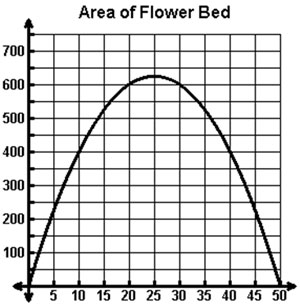
What does the point (20, 600) represent in the situation?
A science lab has a variety of cylindrical containers. All the containers have a height of 5 cm, but each has a different radius. The volume of each container, y, can be found using the equation y =  x2 · 5 where x represents the radius of the base, in cm, of the container. A graph of the equation is shown below.
x2 · 5 where x represents the radius of the base, in cm, of the container. A graph of the equation is shown below.
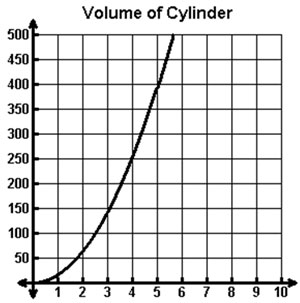
What does the point (8, 1005.3) represent in this situation?
A golf ball is hit from ground level with an initial upward velocity of 96 feet/second. The height of the golf ball, y, after x seconds can be modeled by the equation and graph shown below.
y = -16x2 + 96x
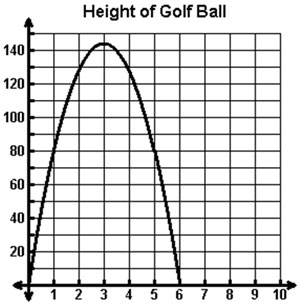
What do the ordered pairs (1, 80) and (5, 80) represent in this situation?
Which of the following functions has roots of – 1 and – 7?
The graph of a quadratic function is shown below.
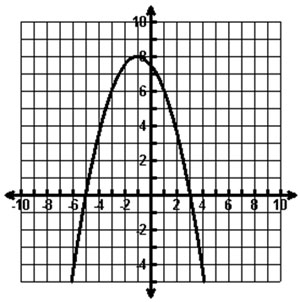
Which of the following functions is shown on the graph?
The graph of a quadratic function is shown below.
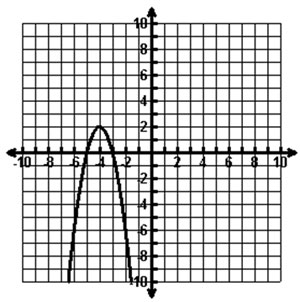
Which of the following is a true statement about the graph of the function?
Which graph has an axis of symmetry of x = 3 and a minimum value of (3, -2)
A.
 |
B.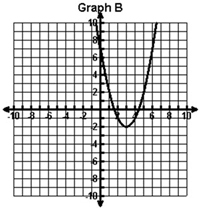 |
C.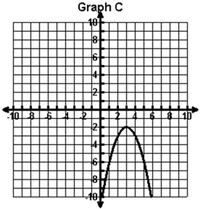 |
D.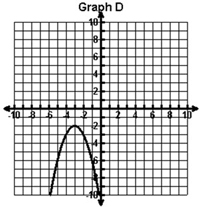 |
The graph of a quadratic function is shown below.
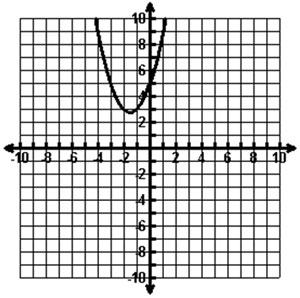
Look at the statements below.
Which of the statements above are true about the graph of the function?
A quadratic equation is shown below.
y = one-half 1 2 (x − 5)2 + 4
Which of the following is NOT true about the graph of the equation?
What are the solution(s) to the equation below?
x2 + 6x + 9 = 0
Shown below is a quadratic function in standard form.
f(x) = x2 + 8x − 10
Which of the following is a possible first step in changing the equation to vertex form?
Shown below is a quadratic function in standard form.
f(x) = 3x2 − 12x − 4
Which of the following shows the function in vertex form?
Which table below represents a quadratic function?
A.
|
B.
|
||||||||||||||||||||||||||||
C.
|
D.
|
||||||||||||||||||||||||||||
The vertex form of a quadratic function is shown below.
f(x) = 3(x + 1)2 + 4
Which of the following is a possible first step when changing the function to standard form?
The vertex form of a quadratic function is shown below.
f(x) = -2(x − 3)2 + 1
Read each of the statements listed below.
Statement 1: The standard form of the function is f(x) = -2x2 + 12x − 17.
Statement 2: The graph of the function opens downward.
Statement 3: The vertex of the graph is located at (3, 1).
Statement 4: The axis of symmetry of the graph is x = 3.
Which of the statements are true about the function?
Which of the following situations can be modeled using a quadratic function?
The table below shows the length and area of several rectangles. All of the rectangles have a perimeter of 48 inches.
| Length | 2 | 6 | 8 | 10 | 12 |
|---|---|---|---|---|---|
| Area | 44 | 108 | 128 | 140 | 144 |
Which of the following functions represents the area of the rectangle, y, based on the length of the rectangle, x.